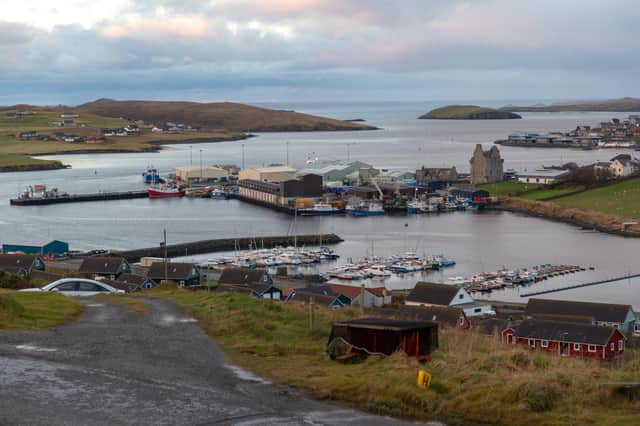Discovery of 26 skeletons in front garden to shed new light on ancient island life


The human remains, which were likely laid to rest aroud 500 to 600 years ago, were found in Upper Scalloway on the Shetland mainland after a homeowner started digging to build a shed for his children’s bikes.
It is believed the skeletons were buried on land which formed part of an Iron Age Village, which was first discovered in the 1980s and centred round a broch, or a large stone tower.
Advertisement
Hide AdAdvertisement
Hide AdEarlier Pictish-era finds, including painted pebbles and a bone comb, were also discovered at the site indicating that it was occupied some 600 years before the Iron Age settlement took shape.
Val Turner, archaeologist with the Shetland Amenity Trust, said the remains could shed new light on life in Shetland through time, with advances in archaeological science set to offer up new information about those living on the islands hundreds of years ago.
Ms Turner said: “The skeletons could tell us a lot about 14th or 15th Century population of Sheltand. It is assumed in Shetland that a lot of people in Shetland were Vikings so it will be interesting to see if that is the case with these skeletons, or if it is more of a mixed picture
"We hope to find out culturally where these people were lined to and they could give us more information onf where people in Shetland at that time were linked to. There is potentially a lot to find here on origins and where these people were born and brought up.”
The human remains were buried in relatively shallow ground with it unusual for such skeletons to survive in Shetland given the soil conditions.
The discovery of the latest remains gives a fresh opportunity to investigate the Iron Age in Shetland given the remains found 30 years ago were reburied in a nearby churchyard.
It is understood that the skeletons found last month were aligned in north/south formation which is considered unusual given Christian graves normally sit east/west.
A message from the Editor:Thank you for reading this story on our website. While I have your attention, I also have an important request to make of you.With the coronavirus lockdown having a major impact on many of our advertisers - and consequently the revenue we receive - we are more reliant than ever on you taking out a digital subscription.Subscribe to scotsman.com and enjoy unlimited access to Scottish news and information online and on our app. With a digital subscription, you can read more than 5 articles, see fewer ads, enjoy faster load times, and get access to exclusive newsletters and content. Visit https://www.scotsman.com/subscriptions now to sign up.
Advertisement
Hide AdAdvertisement
Hide AdOur journalism costs money and we rely on advertising, print and digital revenues to help to support them. By supporting us, we are able to support you in providing trusted, fact-checked content for this website.
Joy Yates
Editorial Director